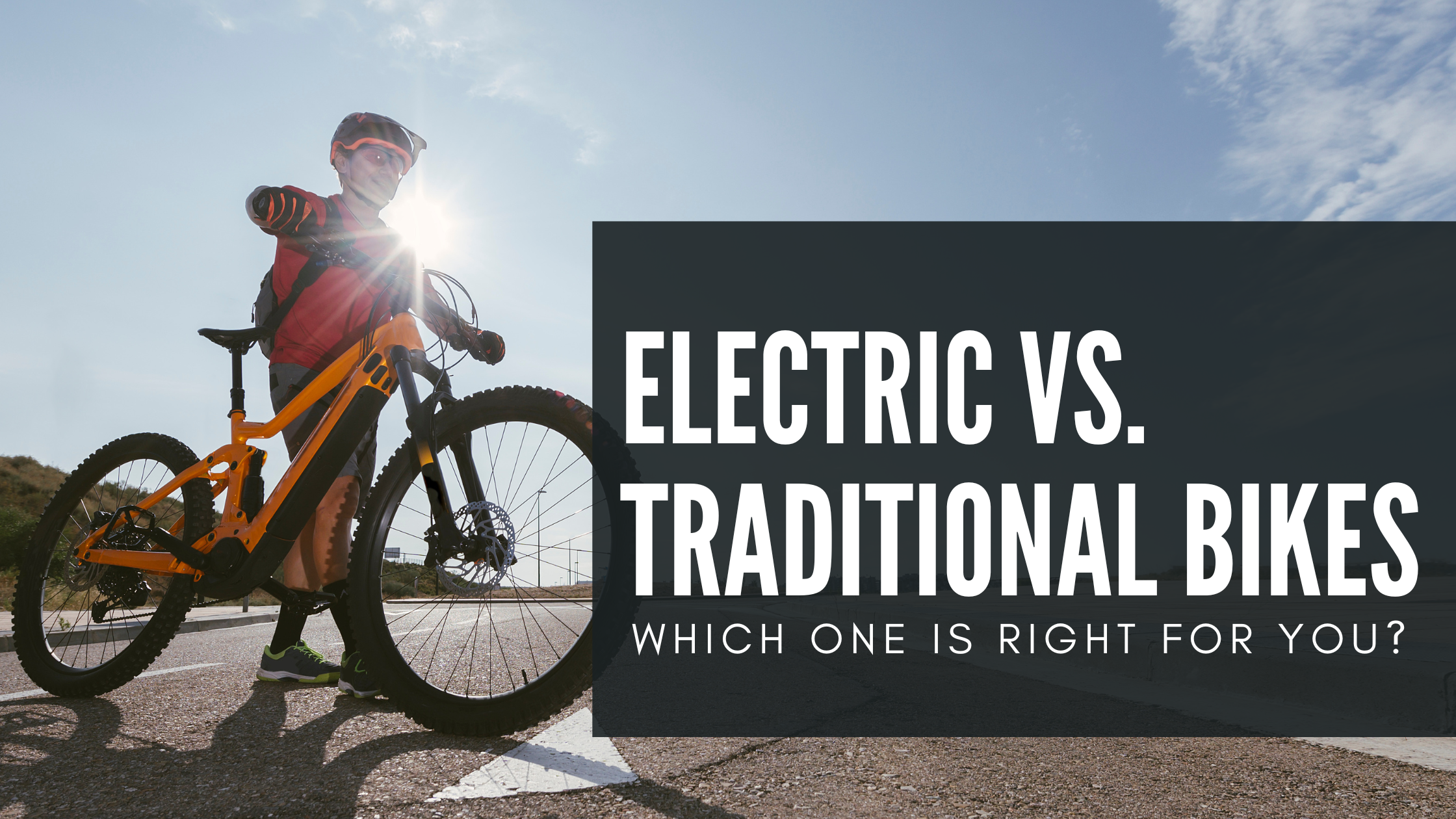Thinking about getting a new bike but can’t decide between an electric bike (e-bike) and a traditional one? Both have their perks and quirks. Let's break down the key differences to help you figure out which one is your perfect ride.
Power Up or Pedal On: The Basics
1. Traditional Bikes
Traditional bikes rely solely on your pedaling power. They come in various types such as road bikes, mountain bikes, and hybrid bikes, each designed for specific terrains and purposes.
2. Electric Bikes
E-bikes have a motor and a battery to assist with pedaling. There are different levels of assistance, from mild boosts to full-throttle power, making cycling easier and extending your range.
Pros and Cons: Traditional Bikes
Pros:
- Exercise: Traditional bikes provide a great workout, improving cardiovascular health and muscle strength.
- Simplicity: Fewer components mean less maintenance and fewer things that can go wrong.
- Cost: Generally, traditional bikes are less expensive to purchase and maintain.
- Lightweight: Without the added weight of a motor and battery, traditional bikes are lighter and easier to handle.
Cons:
- Effort: Requires more physical effort, which can be a barrier for long distances or hilly terrains.
- Speed: Limited by your own pedaling power, which might be slower compared to e-bikes.
Pros and Cons: Electric Bikes
Pros:
- Assistance: Pedal-assist and throttle options make riding less strenuous, especially on hills and long rides.
- Speed: Higher average speeds make commuting faster and more efficient.
- Versatility: Ideal for a wide range of riders, including those with physical limitations or those who are new to cycling.
- Extended Range: Allows you to travel longer distances without exhausting yourself.
Cons:
- Cost: Higher upfront cost and potential maintenance expenses due to the motor and battery.
- Weight: Heavier than traditional bikes, which can make them harder to transport and handle when not riding.
- Complexity: More components mean more potential issues and a need for specialized repairs.
Who Should Choose a Traditional Bike?
- Fitness Enthusiasts: If you’re looking to get a solid workout, traditional bikes are the way to go. They require more physical effort, which means burning more calories and building more muscle.
- Minimalists: If you prefer simplicity and ease of maintenance, traditional bikes are straightforward with fewer components that can break down.
- Budget-Conscious Riders: If you’re looking for an affordable option, traditional bikes are generally cheaper to buy and maintain.
- Lightweight Lovers: If you need a bike that’s easy to carry and maneuver, the lighter weight of traditional bikes is a significant advantage.
Who Should Choose an Electric Bike?
- Commuters: If you have a long commute or face challenging terrain, an e-bike can make the ride quicker and less strenuous.
- Casual Riders: If you’re new to cycling or have physical limitations, the assistance provided by e-bikes makes riding more accessible and enjoyable.
- Long-Distance Travelers: If you love going on long rides, an e-bike extends your range and allows you to explore further without worrying about fatigue.
- Eco-Friendly Commuters: If you want a green alternative to driving but need something less exhausting than a traditional bike, e-bikes offer a perfect balance.
Key Considerations
1. Purpose
Think about how you plan to use your bike. For fitness, choose a traditional bike. For commuting or longer rides, consider an e-bike.
2. Terrain
If you live in a hilly area, an e-bike can make those climbs much easier. For flat terrain, a traditional bike might suffice.
3. Budget
E-bikes are more expensive upfront. Consider your budget for both initial purchase and ongoing maintenance.
4. Fitness Level
Consider your physical condition. If you have any health issues or are new to cycling, an e-bike can make riding more accessible.



Share:
Why Biking is Great for Your Health and the Environment
Unleash the Power of Mobility with the Tracer Coyote 20” Aluminum Folding Electric Bike